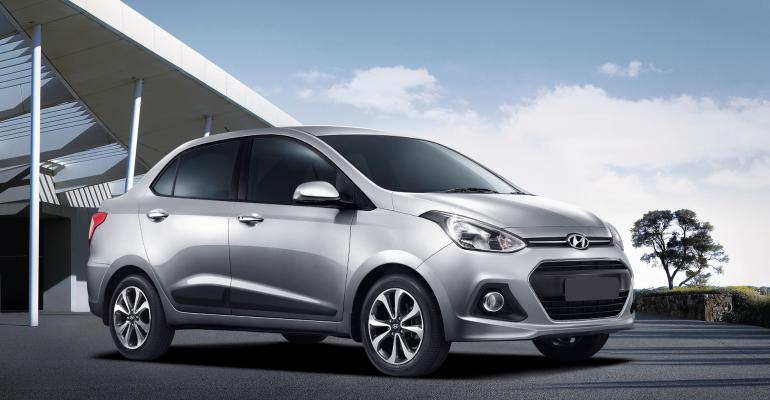MUMBAI – Throughout its 16 years in the market, Hyundai India has maintained a low profile behind No.1 seller Maruti Suzuki. But thanks to diversification, it is quietly gaining ground.
During the most critical months of the 2013 recession, industrywide sales slipped 7.2% year-over-year to 3.1 million units. Hyundai India was able to limit its decline 2.3% to 380,000.
The contrast has been even more visible this year, WardsAuto data shows. While overall light-vehicle deliveries slipped 3.1% to 2.2 million units through September, Hyundai India saw an 8.1% increase to 305,000. Its market share of 13.6% at the end of September was up from 12.6% year-ago and close to its all-time high 13.7%.
The automaker is targeting an annual share increase of one percentage point, Hyundai India vice president Rakesh Srivastava says.
Hyundai India’s advantage lies in its diverse portfolio, its ability to alter the composition of its production models at short notice and capacity to adjust export volumes in response to market movement.
Hyundai sells nine car models with 60 variants in India, including highly successful compacts including the Xcent, i10 and Grand i10, and i20 and Elite i20. The i10 alone has been among India’s 10 best-selling cars in 13 months of the past three years, followed by the i20 and Eon minicar (five months each), Santro (three months) and Xcent (two). First-time-buyer retention is high.
While it is the second-largest domestic player, Hyundai is India’s biggest exporter, serving as the export hub for 120 countries. During the past three years, its ratio of domestic sales to exports has varied between 59:41 and 76:24. Any shortfalls in exports are covered by production at its Korean or Chinese plants.
With demand within India increasing, Hyundai is focusing on domestic sales. The automaker has transferred production for export to the European Union from India to its Turkey plant.
With the exception of the recently introduced Santa Fe, the automaker’s portfolio has lacked light trucks, but it plans to make major inroads into the SUV and MPV segments.
Hyundai India’s emphasis on premium features, sporty styling and meticulous design reflect a better understanding of the Indian customer than its competitors.
The automaker’s Hyundai R&D Center in Hyderabad employs 600 people and is the cornerstone of its success. The center conducts product clinics to tailor Korean models to Indian specifications, and often responds with design-to-market times of less than six months.
Of Hyundai India’s 119 suppliers, 77 are local.
Rural sales are another key to Hyundai India’s accomplishments. The automaker has 280 rural outlets and plans to add another 40 by December, when it expects 20% of sales to come from outside metropolitan areas, compared with 8% in 2012.
Hyundai India’s net profits in the 2012-2013 fiscal year were Rs10.3 billion ($170 million) and increased in fiscal 2013-2014 to Rs11.1 billion ($180 million), according to data filed with the government’s Registrar of Companies. In comparison, all other foreign automakers’ combined losses last fiscal year totaled Rs65 billion ($1.1 billion).





